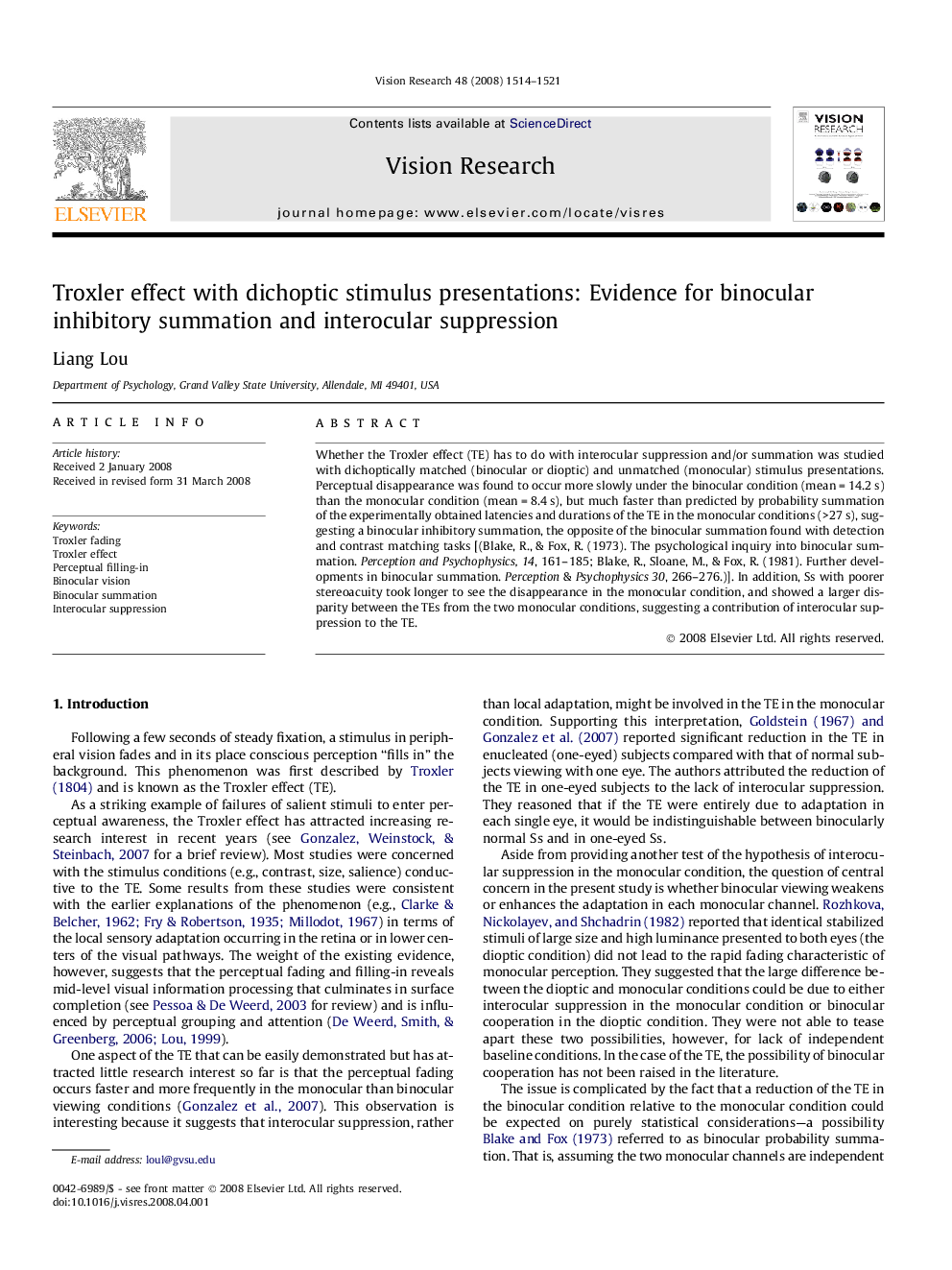| Article ID | Journal | Published Year | Pages | File Type |
|---|---|---|---|---|
| 4035643 | Vision Research | 2008 | 8 Pages |
Whether the Troxler effect (TE) has to do with interocular suppression and/or summation was studied with dichoptically matched (binocular or dioptic) and unmatched (monocular) stimulus presentations. Perceptual disappearance was found to occur more slowly under the binocular condition (mean = 14.2 s) than the monocular condition (mean = 8.4 s), but much faster than predicted by probability summation of the experimentally obtained latencies and durations of the TE in the monocular conditions (>27 s), suggesting a binocular inhibitory summation, the opposite of the binocular summation found with detection and contrast matching tasks [(Blake, R., & Fox, R. (1973). The psychological inquiry into binocular summation. Perception and Psychophysics, 14, 161–185; Blake, R., Sloane, M., & Fox, R. (1981). Further developments in binocular summation. Perception & Psychophysics 30, 266–276.)]. In addition, Ss with poorer stereoacuity took longer to see the disappearance in the monocular condition, and showed a larger disparity between the TEs from the two monocular conditions, suggesting a contribution of interocular suppression to the TE.
